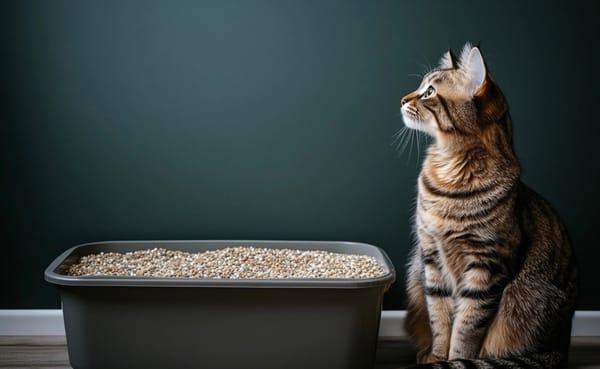Creating the Perfect Habitat for Your Pet Fish: A Beginner's Guide

Fishkeeping is a popular hobby that brings joy and relaxation to millions of people around the world. But if you're new to the world of aquariums, creating the perfect habitat for your pet fish can seem overwhelming. Don't worry – we've got you covered. In this comprehensive beginner's guide, we'll walk you through everything you need to know about setting up a fish tank, maintaining water chemistry, and providing proper filtration systems. Follow our tips and tricks to create the ideal home for your aquatic pets and keep them happy and healthy.
Setting Up a Fish Tank
The first step in creating the perfect habitat for your pet fish is to set up a fish tank. Here are some things to consider when choosing a tank:
- Size: The size of your fish tank depends on the species of fish you plan to keep. Most tropical fish do well in tanks ranging from 20 to 40 gallons, while larger fish like bettas and guppies require bigger tanks. Be sure to research the specific needs of your chosen fish species to determine the appropriate tank size.
- Location: Place your fish tank in a quiet location away from direct sunlight, drafts, and heat sources like radiators or vents. Avoid placing the tank near windows or doors, as this can cause temperature fluctuations and disturb the fish.
- Substrate: Choose a substrate that suits your fish's natural habitat. For example, sand is suitable for beach-dwelling fish like clownfish, while gravel is better for river-dwelling fish like goldfish. Rinse your substrate thoroughly before adding it to the tank to remove any dust or debris.
- Decoration: Add decorations to your fish tank to provide hiding places and visual interest for your fish. Be careful not to overcrowd the tank with too many decorations, as this can reduce swimming space and cause stress for your fish.
Maintaining Water Chemistry
Once you've set up your fish tank, it's time to focus on maintaining the water chemistry. Proper water chemistry is essential for keeping your fish healthy and preventing disease. Here are some things to consider:
- pH Level: The pH level of your fish tank should be between 7.0 and 8.0. Test the pH regularly using a test kit and adjust as needed with products like baking soda or vinegar.
- Ammonia and Nitrite Levels: Ammonia and nitrite levels should be kept below 20 parts per million (ppm). Test the water regularly using a test kit and add products like ammonia neutralizer or nitrite reducer as needed.
- Nitrate Levels: Nitrate levels should be kept below 40 ppm. Test the water regularly using a test kit and add products like algae magnet or filter cleaners as needed.
Providing Filtration Systems
Filtration systems are essential for keeping your fish tank clean and free of waste. Here are some things to consider:
- Internal Filter: An internal filter is a mechanical device that circulates water throughout the tank and removes waste particles. Choose an internal filter that is appropriate for the size of your tank and the needs of your fish species.
- Canister Filter: A canister filter is a high-powered external filter that removes waste and debris from the water. Canister filters are ideal for large tanks and demanding fish species.
- Hang-on-Back Filter: A hang-on-back filter is a simple and affordable option that attaches to the back of your tank. Hang-on-back filters are suitable for small tanks and low-maintenance fish species.
Cleaning and Maintenance
Keeping your fish tank clean and well-maintained is essential for the health and happiness of your aquatic pets. Here are some things to consider:
- Water Changes: Perform regular water changes to remove excess waste and prevent the buildup of harmful bacteria. Change 10-20% of the water every week, using a gravel vacuum to siphon off the substrate and remove waste.
- Filter Cleanings: Clean your filter(s) regularly to remove debris and buildup. Use a filter brush to gently scrub the filter media and rinse it thoroughly with dechlorinated tap water or treated water. Replace the filter media according to the manufacturer's instructions.
- Aquarium Maintenance: Regularly inspect your fish tank for signs of disease or injury. Remove any dead leaves or debris with a net or gravel vacuum. Trim any overgrown plants or algae with scissors or a razor blade.
- Heating and Lighting: Maintain a consistent water temperature between 72 and 82°F for most tropical fish species. Install a heater and thermostat to regulate the temperature. Provide adequate lighting for your fish, especially if you have live plants or coral. Most tropical fish require at least 8 hours of light per day.
Conclusion:
Creating the perfect habitat for your pet fish requires careful planning and attention to detail. By following these tips and tricks, you can create a thriving environment for your aquatic pets and enjoy the rewards of watching them swim happily in their new home. Remember to be patient and persistent as you establish a routine for maintaining your fish tank, and soon you'll be rewarded with the joy and beauty of watching your fish flourish. Happy fishkeeping!
#fishhabitat #aquariumsetup #waterchemistry #filtrationsystems #petcare




